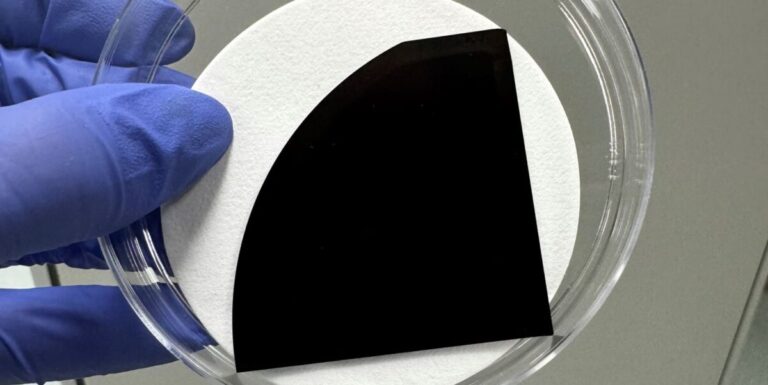The Chinese module maker and the Australian National University used phosphorus diffusion capture agent and another defect mitigation strategy to improve the quality of n-type wafers. The proposed process helped improve the material quality, especially at the tail ends.
Researchers from the Australian National University and Chinese PV module manufacturer Longi examined the wafer quality of n-type industrial blocks made via the Recharged Czochralski (RCz) process, applying two defect mitigation strategies: Tabula Rasa (TR) and phosphorus diffusion scavenger (PDG). to further improve the lifespan of the bulk.
TR is commonly used to resolve oxygen clusters or precipitates in Cz rods, while the PDG involves three steps and is used during crystal growth to remove inclusions and other forms of defects in wafers. By gettering, the impurities are first released into a solid solution and then undergo diffusion through the silicon. Finally, they are confined in an area away from the active circuit areas of the wafer.
“The most surprising finding was the extent to which charging the melt can consistently produce very high-quality material, which has positive implications for improving the efficiency of solar cells,” said corresponding author Afsaneh Kashizadeh. pv magazine. “The most challenging aspect of the study was accurately measuring the Auger-limited lifetime using research laboratory equipment. This required meticulous calibration and repeated validation of our surface passivation films and measurement techniques.”
The implementation of the two strategies was followed by a high-temperature boron diffusion step, which the research team found to be representative of the highest thermal budget step in the tunnel oxide-passivated contact (TOPCon) cell fabrication process.
The Recharged Czochralski (RCz) crystal growth process, which allows reuse of crucibles without switching off between draws, is increasingly used to produce ingots for both n-type and p-type wafers due to its productivity and cost-saving benefits.
To investigate the quality of RCz n-type wafers, the researchers first characterized the mature material before subjecting the test material to high-temperature processes. The samples were measured directly on the blocks and passivated wafers.
The group grew seven blocks with a single crucible and then selected three blocks to make wafers cut from 16 different positions from each of the three blocks, noting that these had different solidified fractions. Wafers supplied by Longi were laser cut from the center of pseudo-square M10 size n-type RCz silicon wafers.
There were three sample groups, one that was left untreated, a second group that underwent the TR treatment in a conventional quartz tube furnace for 30 minutes in an oxygen environment, and the third group was treated with PDG.
“Our study shows that industrial n-type wafers grown via RCz are close to the Auger limit under open-circuit conditions in the as-cut state, and that they effectively reach this limit after PDG,” the team said. “Our results show that the implied maximum power point voltage improved by 5-15 mVespecially near the tail, suggesting that these wafers will benefit from the getter process provided by standard TOPCon processes, although these may differ slightly from the processes used in this study, or from a pre-getter step for heterojunction cells .
The researchers also noted that the wafers “will benefit from the gettering process provided by standard TOPCon processes, although these may differ slightly from the processes used in this study, or from a pre-getter step for heterojunction cells.”
They also found that the lifetime of the samples did not significantly decrease after boron diffusion, indicating that these wafers can withstand high thermal budgets. “We also conclude that the quality of subsequently grown blocks does not significantly decrease even after several blocks are removed from the charged melt, and that entire blocks can be suitable for high-efficiency solar cells without the need for further high-temperature processes. they said
The details of the experiment, including wafer, etching and cleaning steps, tests and results, are described in “Auger-limited bulk lifetime in industrial Czochralski grown n-type silicon rods with melt charging”, published in Solar energy materials and solar cells.
According to Kashizadeh, colleagues’ interest in the research focused on its remarkable “ability to control oxygen concentration at low levels and achieve high lifetimes throughout the process without relying on methods such as magnetic confinement of the melt.
Looking ahead, she noted plans to investigate the quality of next-generation n-type silicon wafers doped with antimony. “Preliminary results show that these wafers have higher mechanical strength compared to phosphorus-doped wafers. Moreover, we observe a more uniform resistance during the growth process of the blocks,” said Kashizadeh.
This content is copyrighted and may not be reused. If you would like to collaborate with us and reuse some of our content, please contact: editors@pv-magazine.com.


